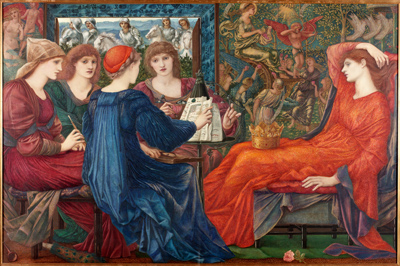With the wedding to look forward to, 2011 is a great year for visiting Britain. But it’s also a bumper time for gallery-goers with many, and diverse, exhibitions opening in London.

Over the next 12 months there are so many good things to see, beginning – for me – with Dulwich Picture Gallery’s splendid exhibition of works by Norman Rockwell. It’s the first showing of his original works in this country and includes among favourites like The Bridge Game, 322 Saturday Evening Post Covers created between 1916 and 1963. (Until 27 March). Dulwich – originally considered the blue print for all future public art galleries – also celebrates its bicentenary on 8 January.
Another exhibition of rarely seen works is at the Estorick Collection of Modern Italian Art and looks at Italian Modernismthrough 40 paintings and sculpture by artists like de Chirico, Marini, Morandi and Vedova. (12 January–3 April).
Sculpture buffs should head for the Royal Academy to see the first exhibition for 30 years of Modern British Sculpture of the 20th century. Among key works are Alfred Gilbert’s Queen Victoria, Epstein’s Genghis Khan, Hepworth’s Single Form and Henry Moore’s Festival Figure. Damien Hirst brings it up to date with Let’s Eat Outdoors Today.(22 January-7 April.)
I love watercolours and two galleries will be top of my list this February. The Courtauld Gallery will be showing Victorian Drawings and Watercolours, including some never seen before in public. There are also a study by Edwin Landseer for the Trafalgar Square lions, Dante Gabriel Rossetti’s sketch of his favourite model Elizabeth Siddal, Whistler’s delicate portrait of Elinor Leyland and Frederick Walker’s lovely Old Farm Garden. (17 February-15 May).
Watercolour, the other exhibition in this medium – at Tate Britain – takes visitors from medieval illumination to its use as an eye-witness account. It records new flora and fauna, new landscapes and events. Works range from those by Blake, Turner and Girtin to Patrick Heron and Tracy Emin. (16 February-21 August).
Two big events caught my eye for April. Jean Miro at Tate Modern is a major review of one of the 20th century’s great artists and the first retrospective here for 50 years. It includes works about Catelonia and his responses to the Spanish Civil War. (14 April-11 September.) My other “must” is the V & A’s The Cult of Beauty: The Aesthetic Movement 1860-1900. This gathers together for the first time painting, sculpture, design, furniture, textiles, wallpaper and architecture as well as fashion and literature of this fascinating trend. Known as “art for art’s sake”, the emphasis was on beauty, the artist’s sensibility and the notion that a pure elevation of the soul is more important to art than realism. It’s great showcase was Liberty’s in Regent Street. Among its exponents were Morris, McNeill Whistler, Frederic Leighton, Rossetti, Burne-Jones and Oscar Wilde. Visitors will see how romantic bohemianism of a small avant-garde circle became a cultural phenomenon. “It’s ideas are current again today,” said Sir Mark Jones, V & A’s director. (2 April -17 July).
In strict contrast, The Vorticists: Manifesto for a Modern Worldis my June choice exhibition at Tate Modern. One of the most avant-garde movements in Britain, there were only two exhibitions of the Vorticists in their lifetime: in London in 1915 and New York in 1917. Named by the American poet Ezra Pound, led by Wyndham Lewis, it included sculptors Gaudier-Brzeska and Epstein, painters William Roberts, Helen Saunders and Edward Wadsworth. There are also strange abstract photographs. (14 June–4 September).
Completely different is The Courtauld’s exhibition devoted to Toulouse-Lautrec and Jane Avril: Beyond the Moulin Rouge.The emblematic figure in his paintings of dancers, cabaret artists, musicians and prostitutes here, among paintings, posters and prints are a series of portraits of the woman he called his muse. Shown with her private as opposed to her public face. (16 June-18 September).
Visitors interested in photography will be spoilt for choice at the Royal Academy. Eye-Witness: Hungarian Photography in the 20th century. Brassai, Capa, Kertesz, Moholy-Nagy and Munkacsui are just some of the photographers shown in this huge exhibition of 200 works taken between 1914 and 1989. (30 June-2 October). It’s followed in September by Degas Dancers: Eye and Camera,the first exhibition to present Degas’ love of the figure in movement and how advances in photography and early film influenced him. (17 September-11 December).
This is only a taste of the exciting things to see this year, but one of the most important is in November. Leonardo da Vinci: Painter at the Court of Milan at the National Gallery will be the most complete dispay of his rare surviving paintings ever held anywhere. Some sensational international loans like La Belle Ferronière, the Madonna Litta and Saint Jerome have never been seen in Britain before. An absolute “must”. (9 November-5 February 2012).
More information
Dulwich Picture Gallery: www.dulwichpicturegallery.org.uk
Estorick Collection: www.estorickcollection.com
Royal Academy: www.royalacademy.org.uk
The Courtauld Gallery: www.courtauld.ac.uk/gallery
Tate Britain and Tate Modern: www.tate.org.uk
V & A: www.vam.ac.uk.
National Gallery: www.nationalgallery.org.uk
Image (above):Laing Art Gallery, Tyne&Wear Archives and Museums






 © 2024
© 2024